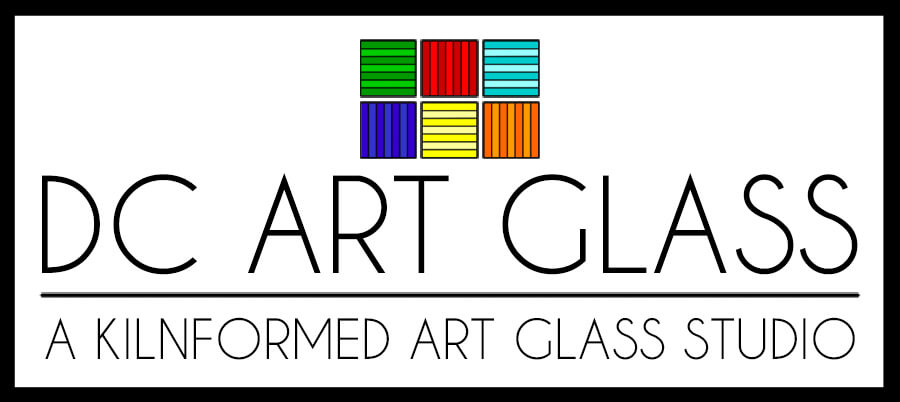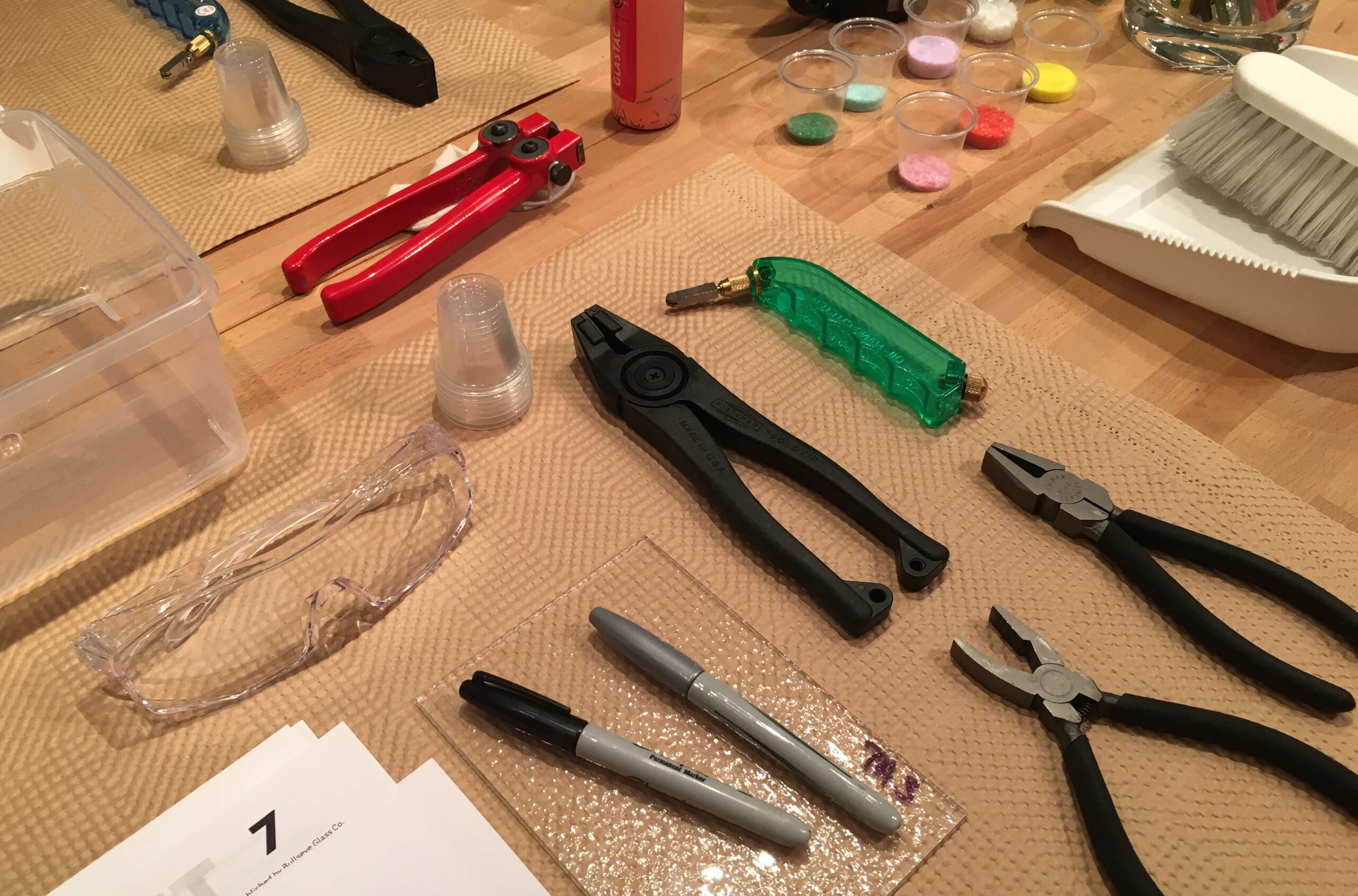
Technique
The fused glass technique known as "strip cutting" or "strip cut construction" is widely used by advanced and beginner kiln formed art glass artists alike, especially when a tightly controlled geometric design is desired.
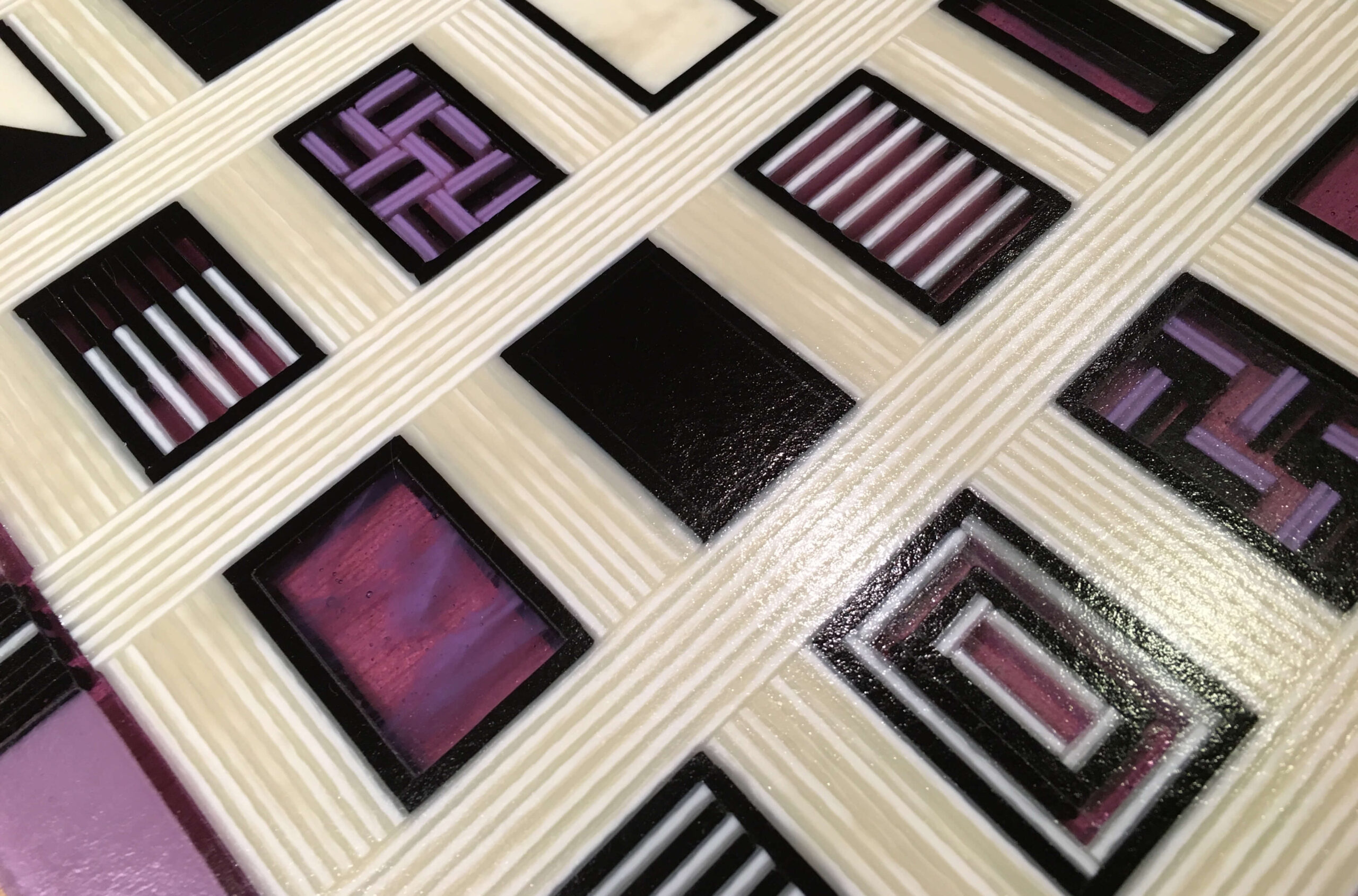
Appearance
During the firing process, the pressure from the weight of the glass against the kiln shelf stifles movement underneath. As a result, lines between strips on the side against the shelf appear more crisp and straighter than those on the side that was exposed to air.
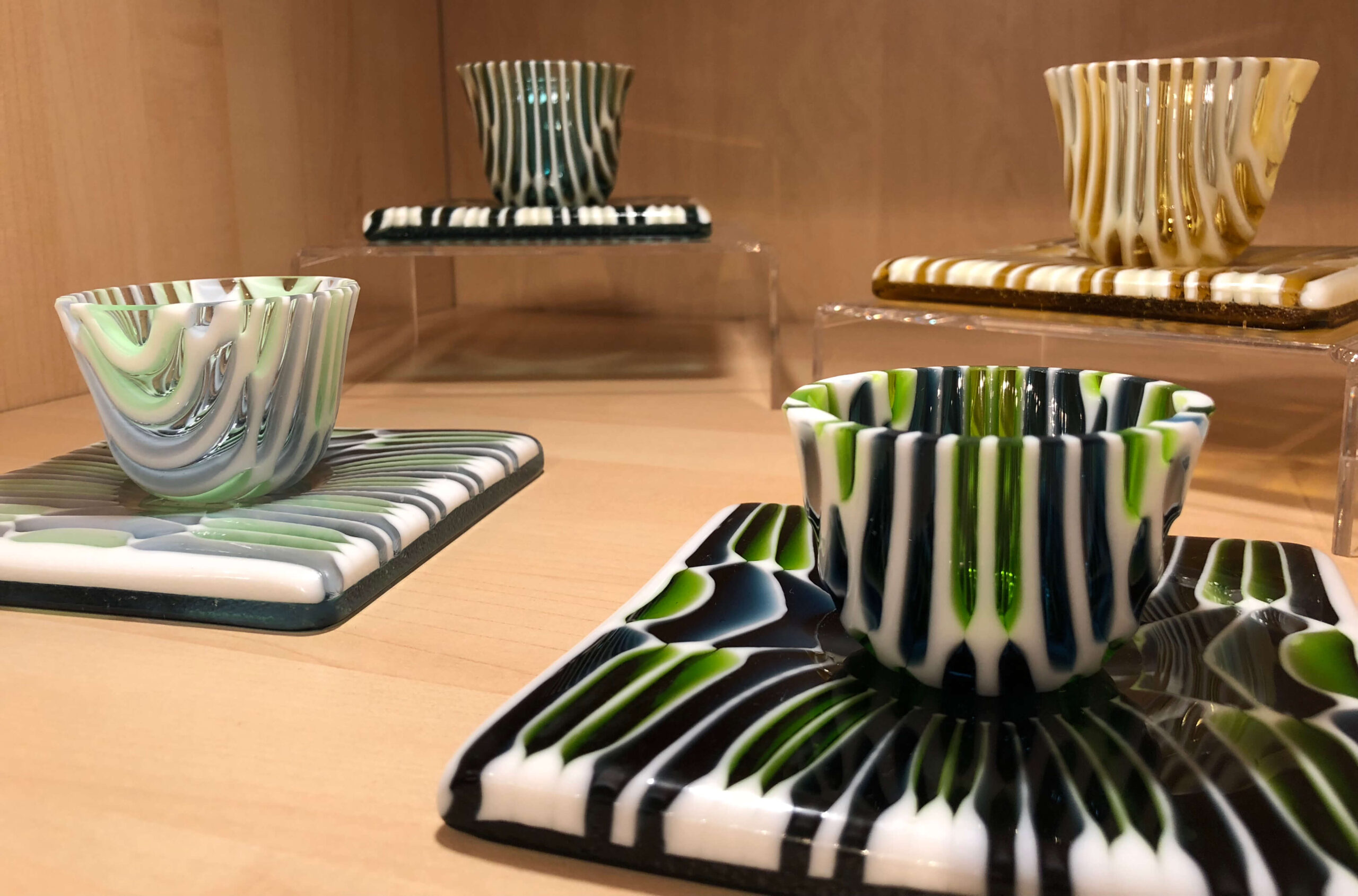
Uniqueness
Unique design accents are often achieved by incorporating reactive glasses, complex patterning or color variations within the strips themselves. Pre-fired elements such as aperture pours may also be integrated to enhance the design concept.
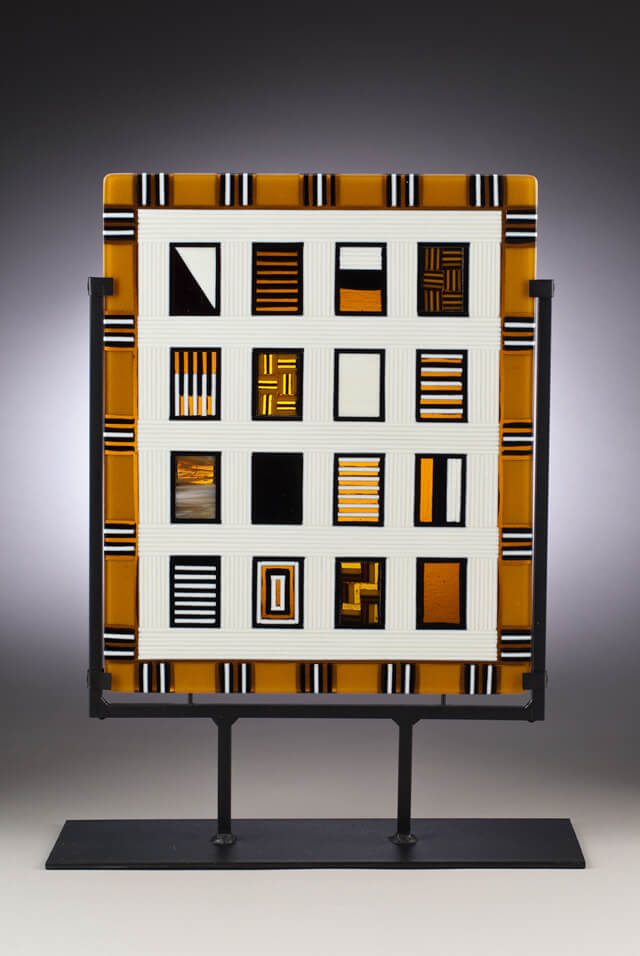
Strip Cut Design: Process
Begin with a Plan
A successful outcome largely depends upon a well thought out plan. At the start, it is good practice to create a detailed sketch that includes accurate measurements. This master sketch will define the design & scope of the project. Later, the sketch will provide a helpful reference guide during the assembly process. In the meantime, determining and securing the required tools & supplies ahead of time will help prevent future delays. Next, setting up and organizing the workstation is key.
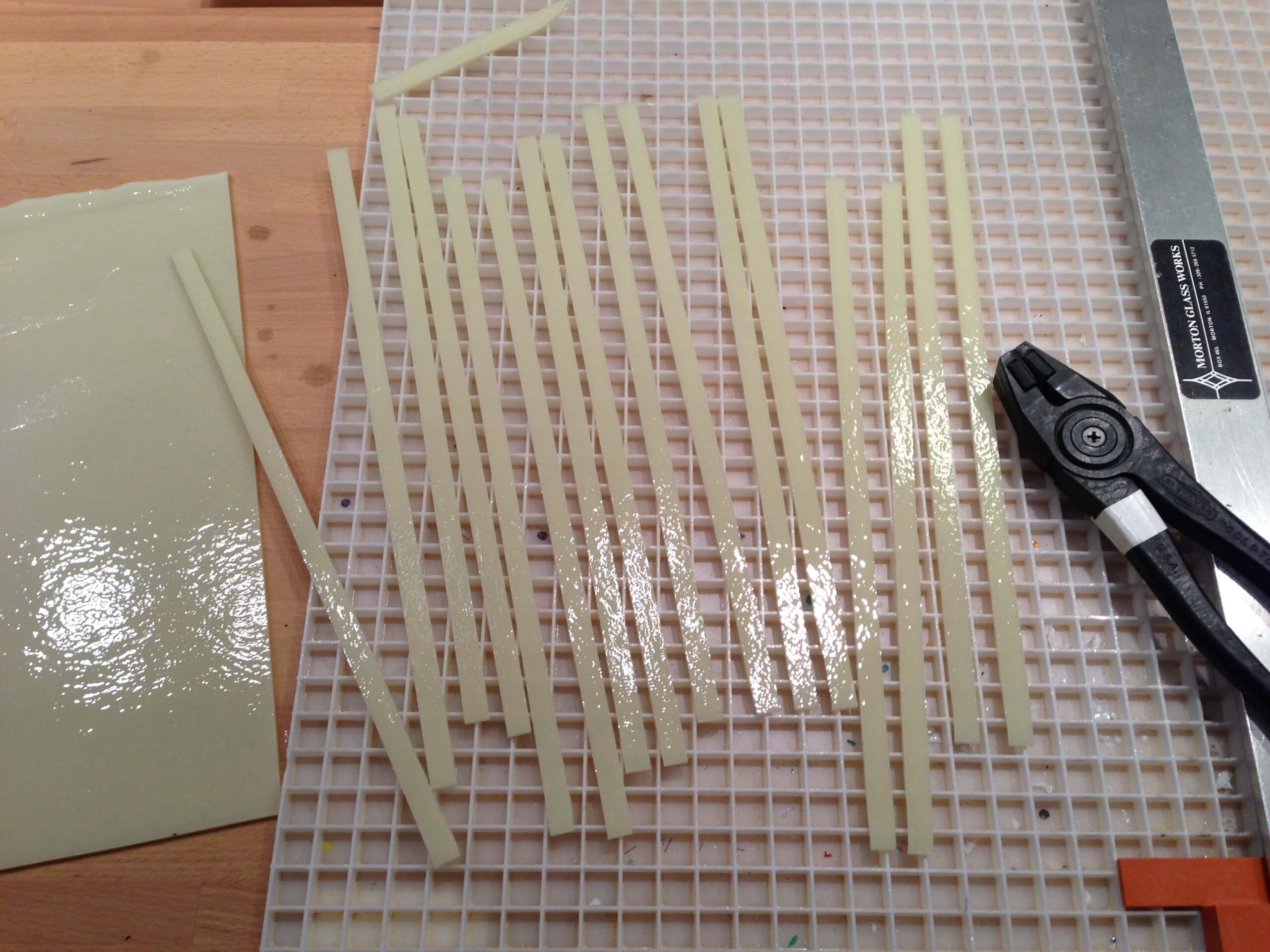
The Cut
Once the workstation is set up, glass cutting commences. As the technique's name suggests, sheet glass is cut into long narrow strips, usually between 3/8" and 1/2" wide. The length of each strip is determined by the master sketch design created earlier.
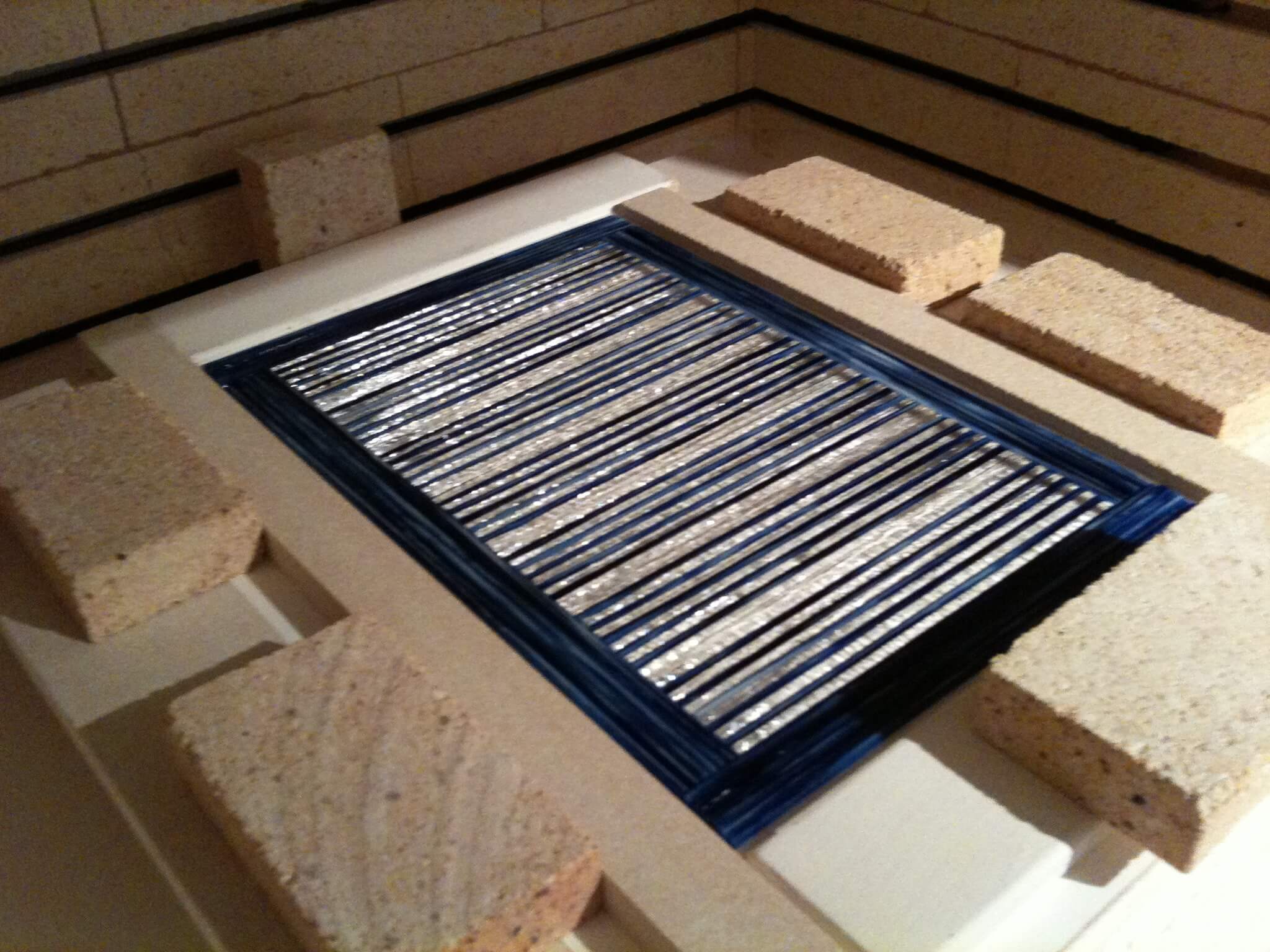
The Set Up
Once cut, the strips are cleaned and assembled based on the master sketch. Each strip is set on edge, side-by-side. This is where accurate measurements and careful glass cutting pays off. Like a puzzle, if the piece doesn't fit, it cannot be forced. Glass Tip: measure twice, cut once!
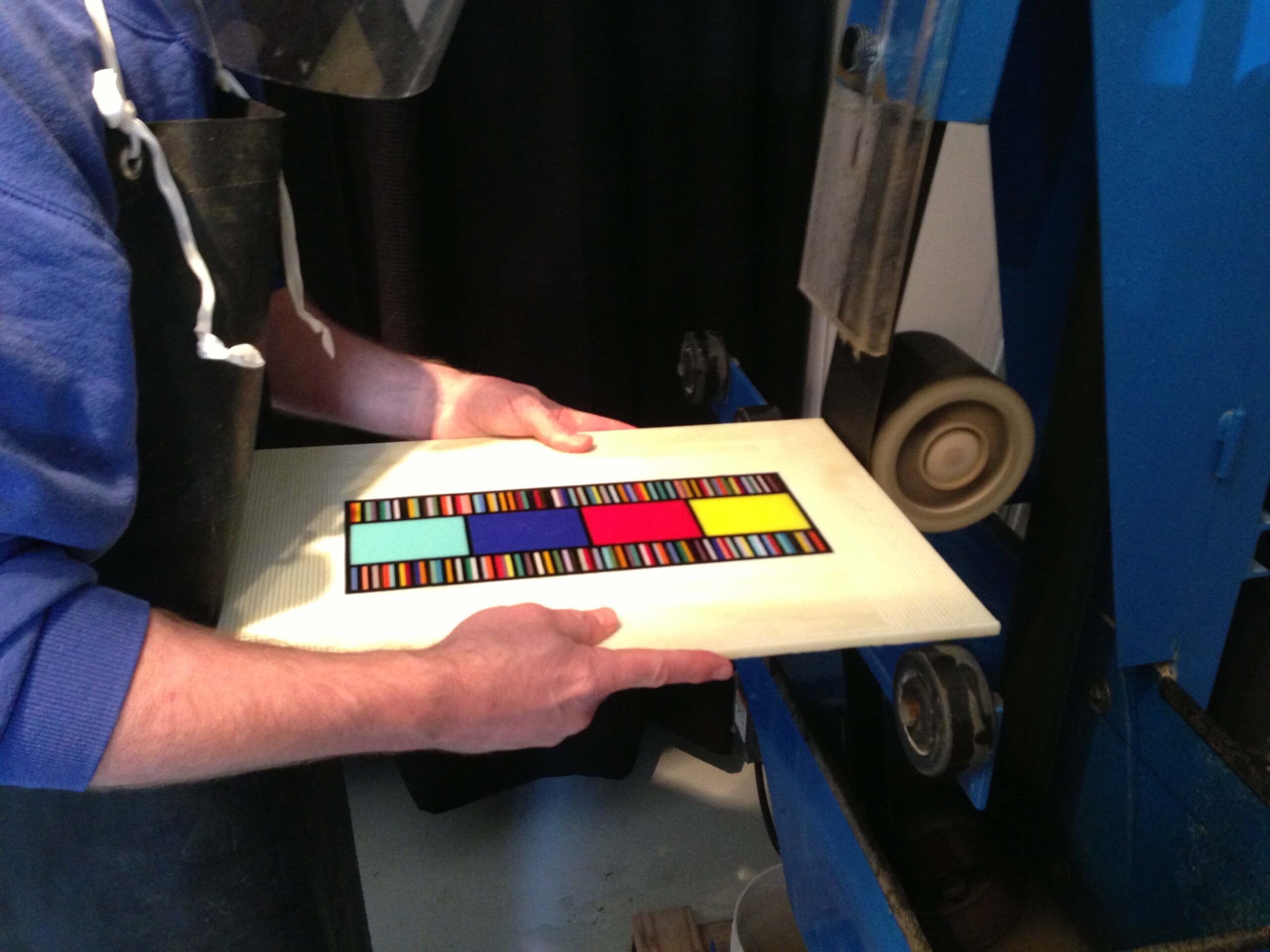
First Fire
Glass assembly usually takes place directly on the kiln shelf. This allows for a protective boarder to be set up around the glass to prevent spreading during the initial firing process. Following the firing, extensive cold working such as smoothing the edges may further enhance the art glass.
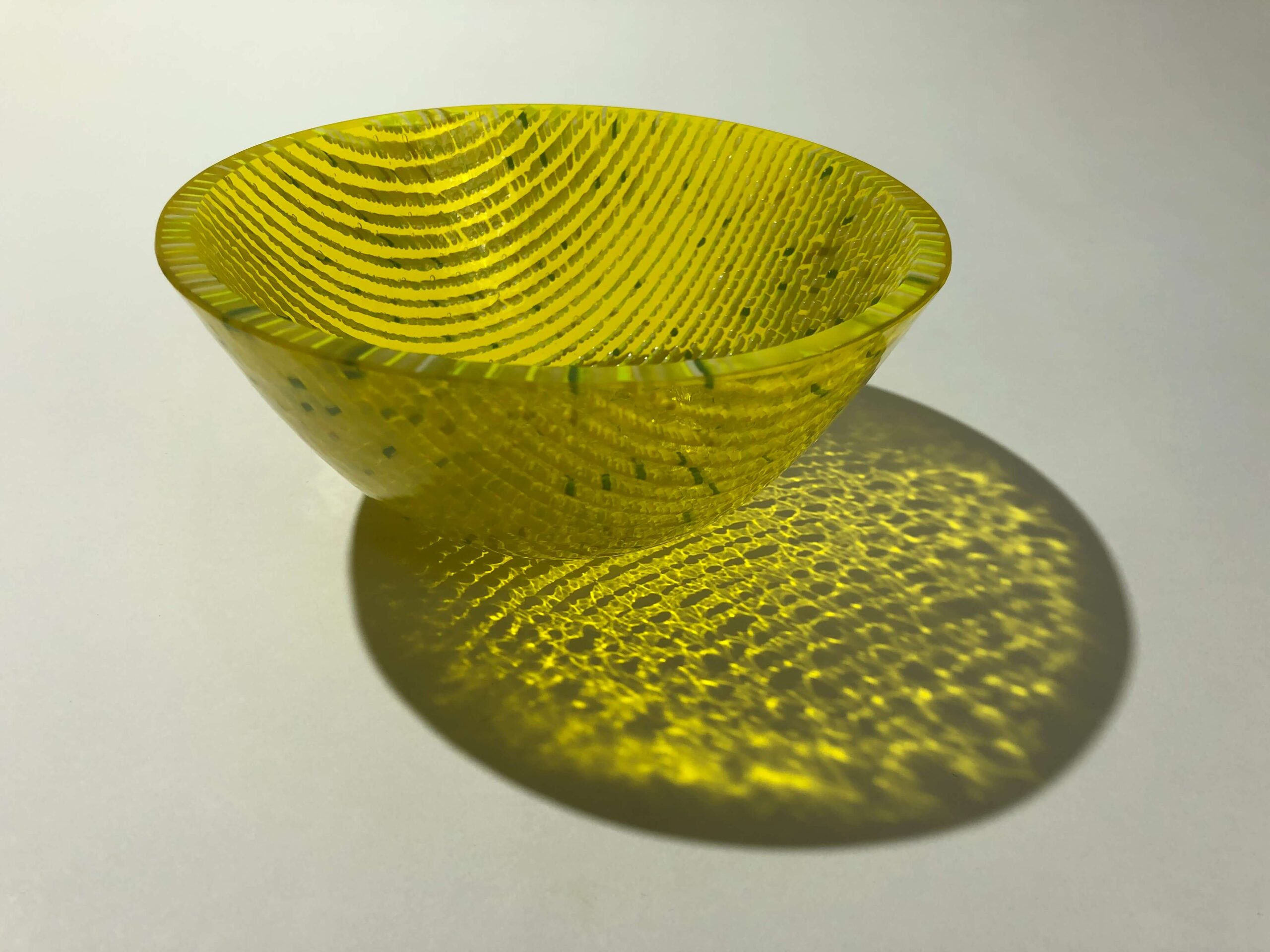
Finalize
Before a Strip Cut Design piece is complete, it may go through subsequent firings and cold working to add texture, add more elements and/or give it a three-dimensional form, such as a vessel.
Strip Cut Design Collection
Inspiration
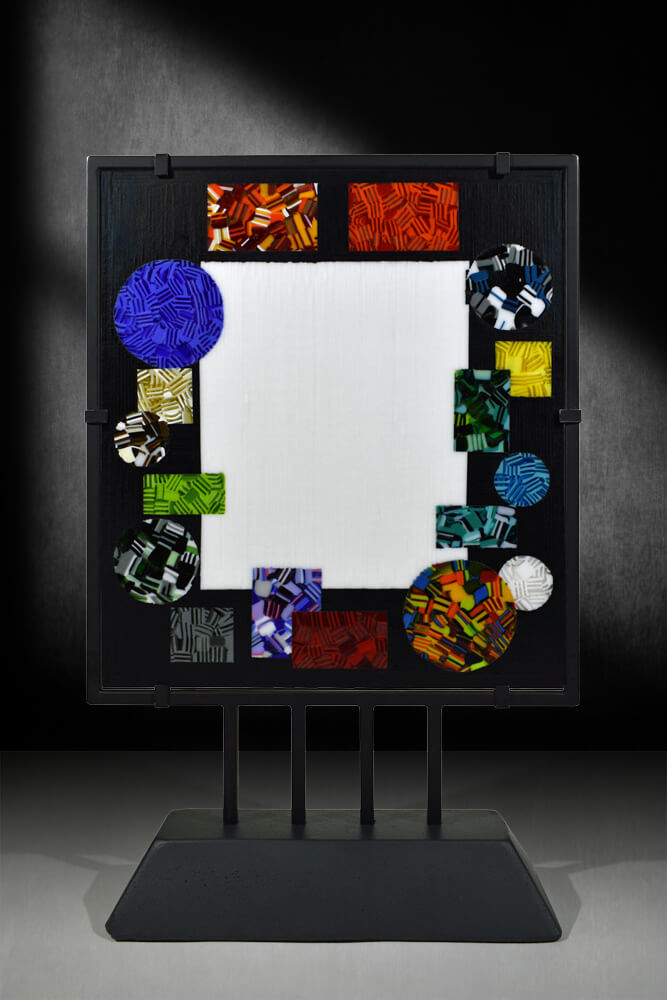
Strip Cut Design Collection
Table Talk
Part Colorbar Murrine, part Strip Cut Design, "Table Talk" is a fused glass hybrid. This piece pays homage to an artist residency that took place at the Pilchuck Glass School in 2010. The center white area represents the main table where attending artists met regularly for group discussions. Surrounding the center are seventeen elements, fifteen of which represent the individual artists. The artist elements do not represent any one specific person per se. Instead, they are representative of the immensely talented participants as a whole, each with colorful personalities and an individual approach to self-expression through art. The remaining two rectangular elements located at the top represent the facilitators, and therefore by design, provide balance.
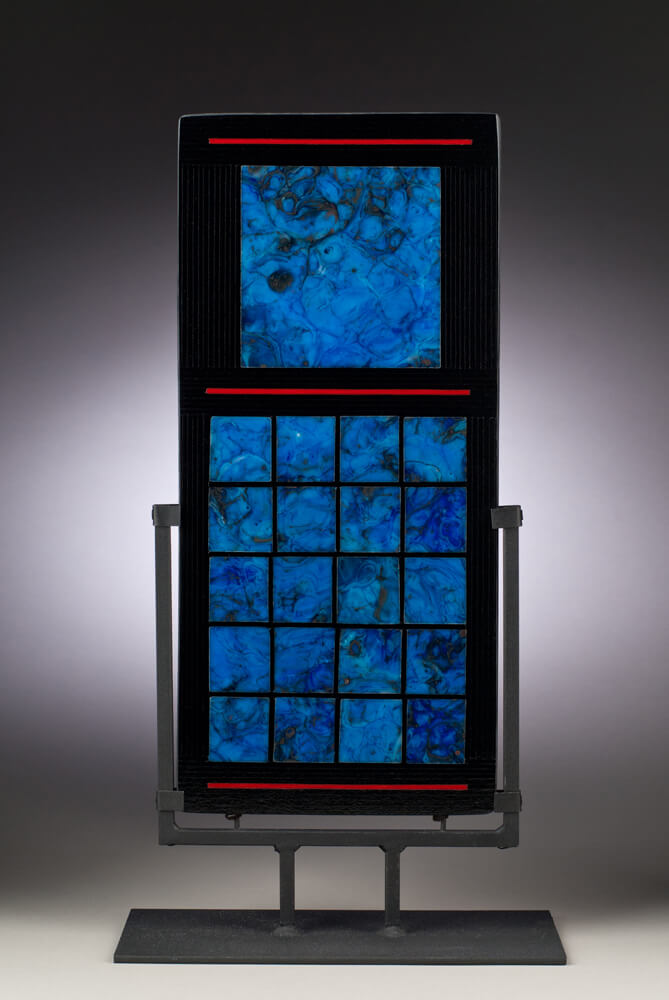
Strip Cut Design Collection
The Hand that Feeds
Taken from an age-old English proverb, the composition manifests a sensible metaphoric message, "Don't bite the hand that feeds you." Look closely within the upper large blue box to see an extended hand holding nutrients for an ominous creature with awaiting open jaws. Three bold lines of red, one directly above the central image, one directly below and another at the bottom suggest a cautionary warning. Has the creature already bitten the hand, or do the red lines represent a presage of what's to come? Originally inspired by an off-Broadway production of C. S. Lewis' "The Screwtape Letters".

Table Talk
Part Colorbar Murrine, part Strip Cut Design, "Table Talk" is a fused glass hybrid. This piece pays homage to an artist residency that took place at the Pilchuck Glass School in 2010. The center white area represents the main table where attending artists met regularly for group discussions. Surrounding the center are seventeen elements, fifteen of which represent the individual artists. The artist elements do not represent any one specific person per se. Instead, they are representative of the immensely talented participants as a whole, each with colorful personalities and an individual approach to self-expression through art. The remaining two rectangular elements located at the top represent the facilitators, and therefore by design, provide balance.

The Hand that Feeds
Taken from an age-old English proverb, the composition manifests a sensible metaphoric message, "Don't bite the hand that feeds you." Look closely within the upper large blue box to see an extended hand holding nutrients for an ominous creature with awaiting open jaws. Three bold lines of red, one directly above the central image, one directly below and another at the bottom suggest a cautionary warning. Has the creature already bitten the hand, or do the red lines represent a presage of what's to come? Originally inspired by an off-Broadway production of C. S. Lewis' "The Screwtape Letters".
